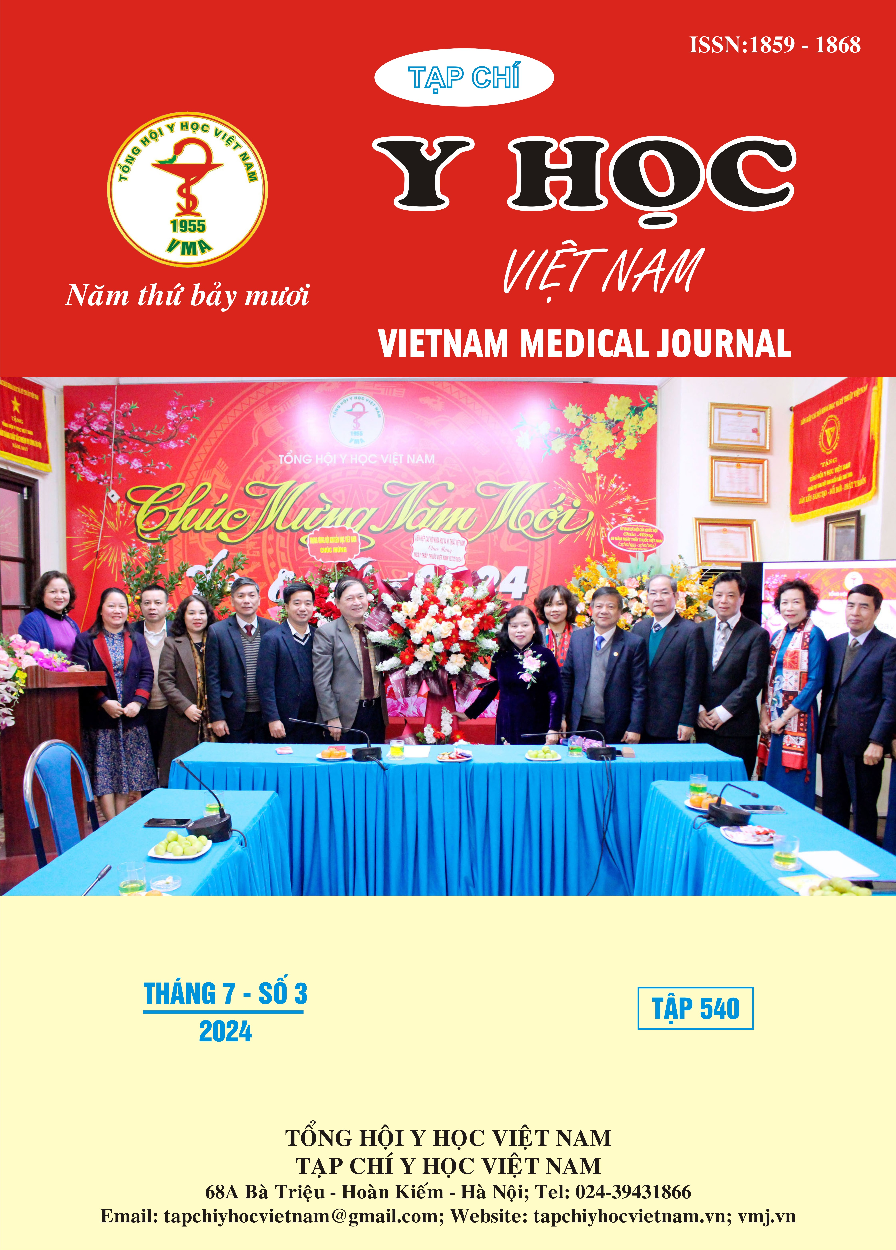INVESTIGATION OF ANTICANCER EFFECT OF OROXYLUM INDICUM ON HEPATOCELLULAR CARCINOMA
Main Article Content
Abstract
Liver cancer is one of the most malignant diseases that is progressively impacting young people, with a high incidence and fatality rate, and it is the major cause of disease burden in Vietnam. The study aims to investigate the anticancer effects of Oroxylum indicum stem bark extract on hepatocellular carcinoma (HCC) at various time points and concentrations. HepG2 cells were maintained in a stable condition in DMEM medium supplemented with 5% FBS and 1% antibiotics. The cell viability following exposure to various concentrations of Oroxylum indicum was determined using MTT assay, and the cell morphology was evaluated using the methylene blue staining method. The results showed that the cell viability of HepG2 decreased gradually with increasing concentration, exposure period, and the kind of solvent employed to dissolve Oroxylum indicum. The IC50 values after 24, 48, and 72 hours were 181,8 μg/mL, 166,6 μg/mL and 159,8 μg/mL in water solvent conditions, and 179,9 μg/mL, 159,2 μg/mL và 144,7 μg/mL in the solvent containing 50% DMSO, respectively. The study has demonstrated the potential anticancer effects of Oroxylum indicum in HCC treatment, emphasizing the importance of herbal medicine in cancer treatment in Vietnam
Article Details
Keywords
HCC, hepatocellular carcinoma, HepG2, Oroxylum indicum
References
2. Trần Thị Thúy Quỳnh, Nguyễn Hồng Hạnh, Phan Thị Giang Thủy, Phạm Đông Phương, Đỗ Thị Hồng Tươi. Khảo sát hoạt tính chống oxy hóa và độc tế bào ung thư gan người HepG2 in vitro của các phân đoạn từ rễ, thân xáo tam phân [Paramignya trimera (Oliv.) Burkill]. Tạp chí y dược học Cần Thơ 2023,56(9):1-2.
3. Chassagne F., Haddad M., Amiel A. A metabolomic approach to identify anti-hepatocarcinogenic compounds from plants used traditionally in the treatment of liver diseases. Fitoterapia. 2018,127:226-236.
4. Chiraatthakit B, Dunkunthod B, Suksaweang S, G. E. Antiproliferative, Antiangiogenic, and Antimigrastatic Effects of Oroxylum indicum (L.) Kurz Extract on Breast Cancer Cell. Evid Based Complement Alternat Med. 2023,2023:3-10.
5. Dinda B., SilSarma I., Dinda M., Rudrapaul P. Oroxylum indicum (L.) Kurz, an important Asian traditional medicine: from traditional uses to scientific data for its commercial exploitation. J Ethnopharmacol. 2015,161:255-278.
6. Mishra S. L., Sinhamahapatra P. K., Nayak A., Das R., Sannigrahi S. In vitro Antioxidant Potential of Different Parts of Oroxylum indicum: A Comparative Study. Indian journal of pharmaceutical sciences. 2010,72(2):267-269.
7. Pace E., Jiang Y., Clemens A., Crossman T., Rupasinghe H. P. V. Impact of Thermal Degradation of Cyanidin-3-O-Glucoside of Haskap Berry on Cytotoxicity of Hepatocellular Carcinoma HepG2 and Breast Cancer MDA-MB-231 Cells. Antioxidants. 2018,7(2):24.
8. Vakele Y., Odun-Ayo F., Reddy L. In vitro antioxidant and cytotoxicity activities of selected indigenous South African medicinal plants. African health sciences. 2022,22(1):395-403.


